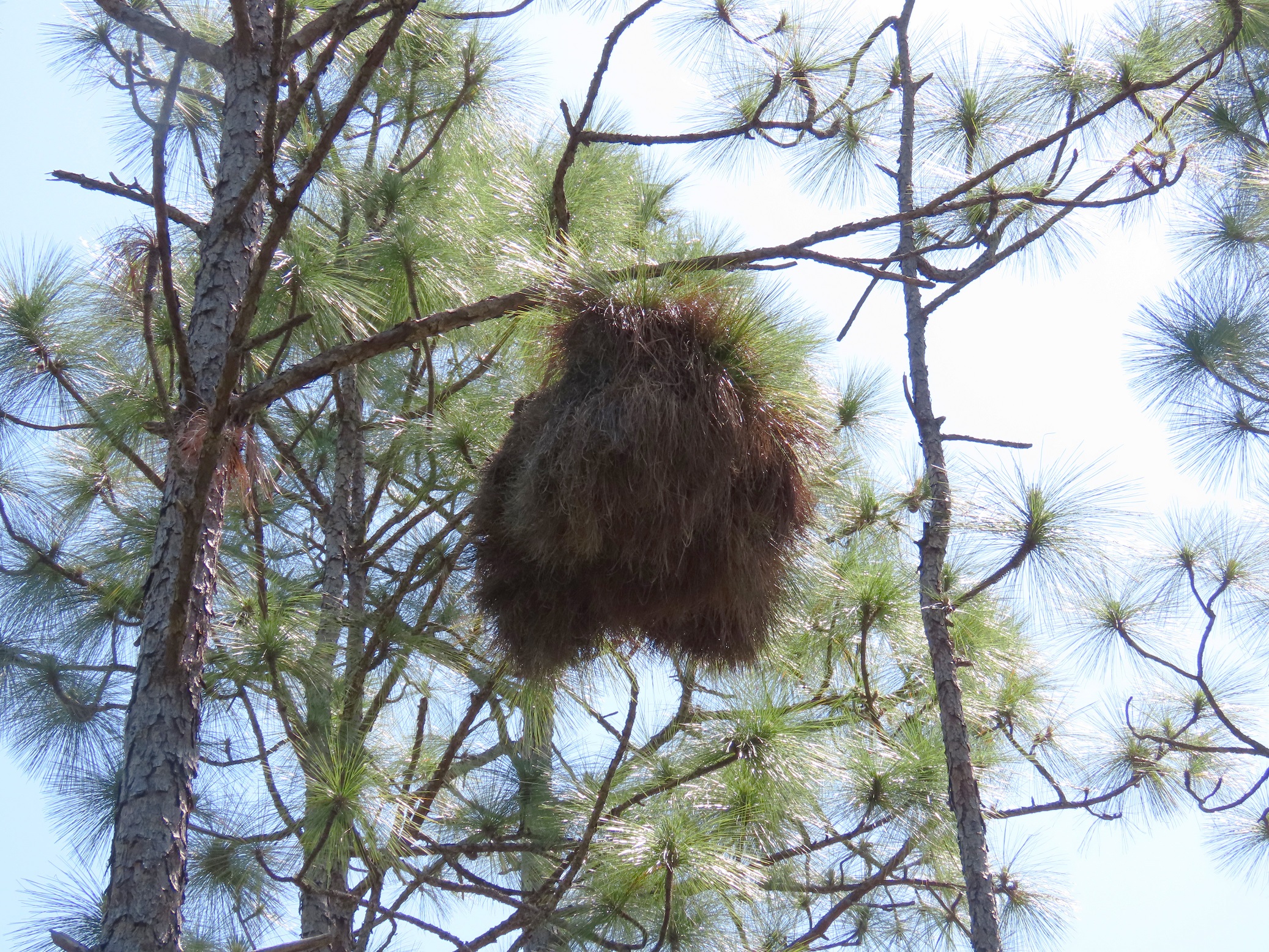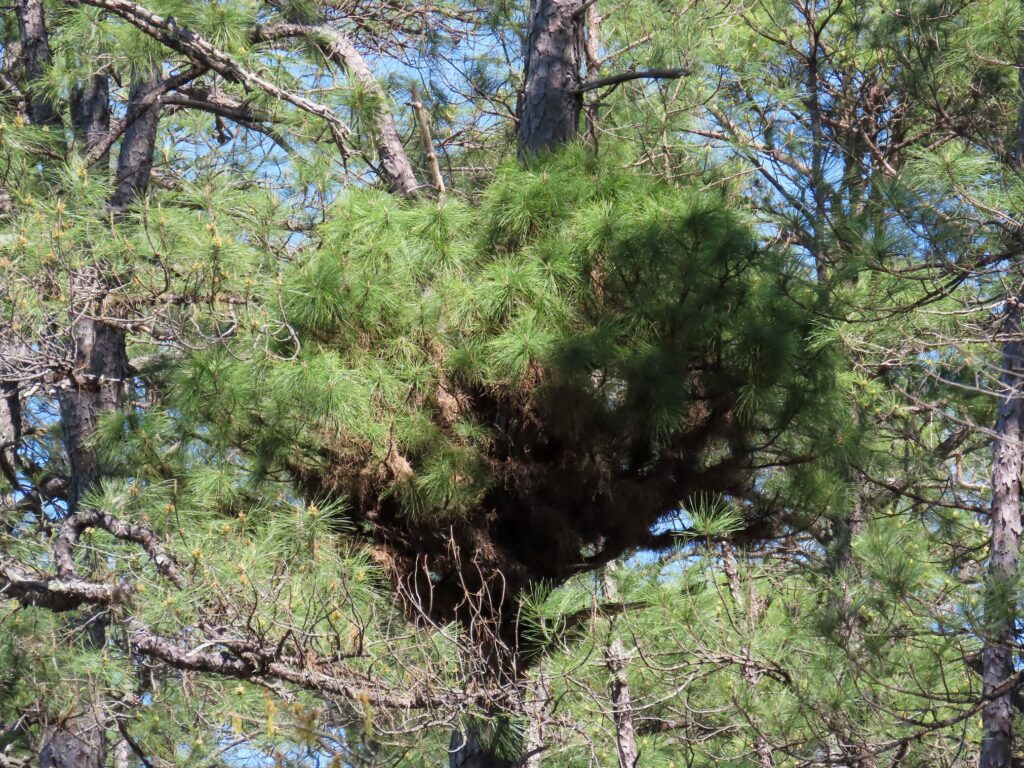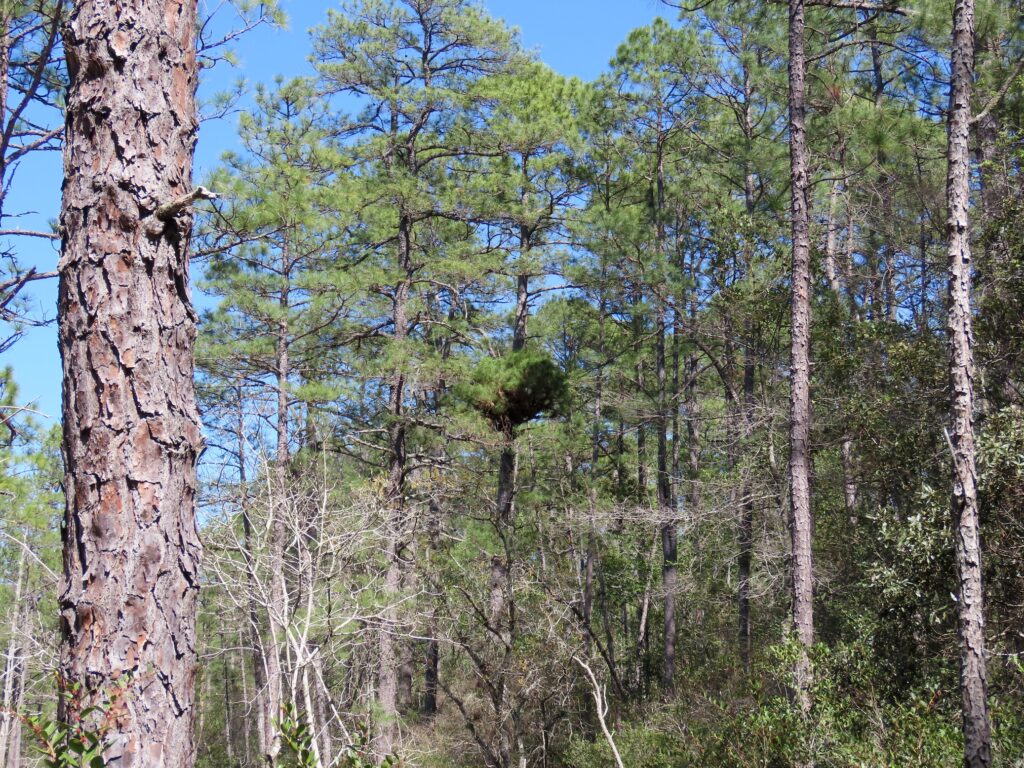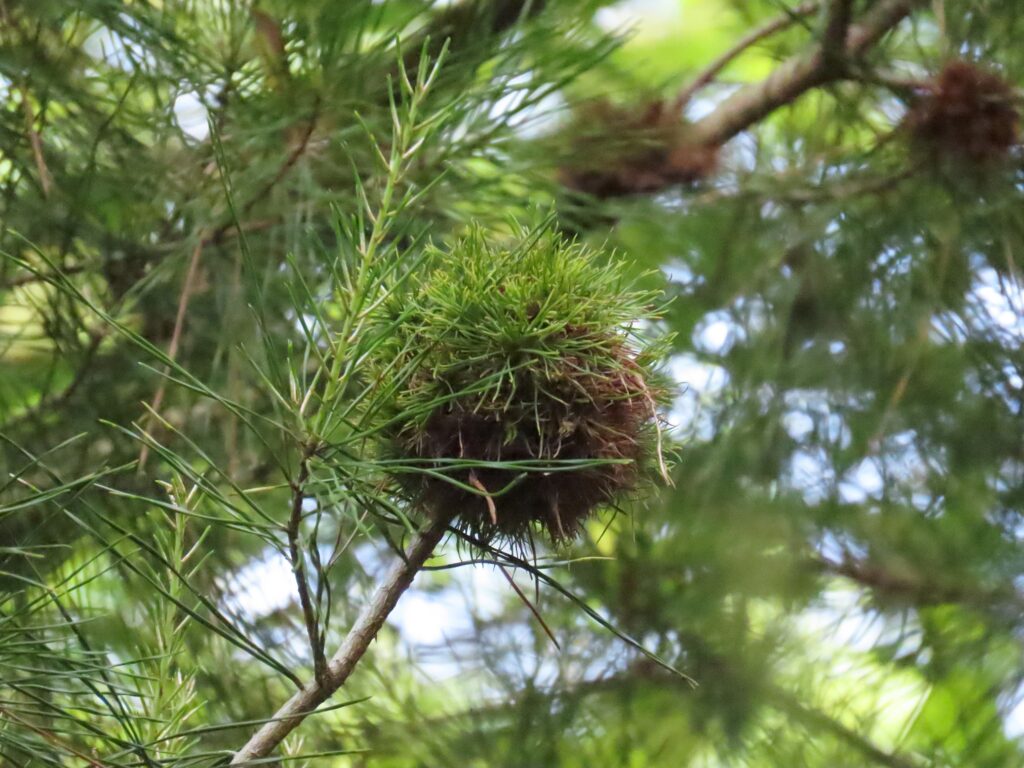



This week for Flora and Fauna Friday we’re on the lookout for the compressor of the canopy, the twister of twigs, the possessor of pines, the enigmatic Witch’s-Broom.
Witch’s-Brooms are an arboreal anomaly. They’re a dense, gnarled cluster of leaves and twigs twisted together into a rounded mass within the crown of a tree or shrub. Somehow, somewhere, for some reason, a switch is flipped in the inner machinations of a single new limb and it begins to grow wrong. Its twigs become condensed, growing only a fraction of an inch in length while still packing new buds into every millimeter of space. Each of these buds still bears its leaves, creating an impossibly dense ball of foliage. Over the years the mass will continue to grow, inch by inch. On some parent tree species these twisted twigs shoot upward in a dense fan, resembling the bound sticks in the head of a handmade broom. When you factor in the seemingly arcane origin of these aberrant tree growths, then you end up with the folk name of “Witch’s Broom” bestowed upon these mysteriously mangled limbs. It’s a moniker that implies a fleck of the dark arts or some whiff of black magic has nestled itself into your local woodlot.
Witch’s-Brooms occur on the limbs of a wide array of woody plants but, here in the Lowcountry, are most commonly seen and most impressively sized in the crowns of pine trees. When produced by a pine, a Witch’s-Broom most often appears as a small, dense hedge growing right in the middle of a tree, a nearly solid mass of needles some two to six feet wide. These Witch’s-Brooms materialize in maybe one in fifty-thousand Loblolly Pines (Pinus taeda), seemingly at random on the landscape. But, with how many Loblolly Pines we have in the South, that shakes out to about one every hundred acres, a half-dozen or so per square mile, or at least that’s the rate my gut indicates from my own anecdotal experiences. Thus they’re by no means a rare sight when looking at the landscape as a whole, but it’s by no means a guarantee you’ll find one on any given tract of land.
Witch’s-Brooms are not a discrete taxon of life we can define. Instead they’re a loose collection of botanical phenomena that lead to a similar end point, a common downstream symptom of a complex biochemical interaction within a host plant induced by an external influence. You can think of them like something between a tumor, a gall, and a wart. In many trees, Witch’s-Brooms are caused by an infection. Be it a fungus, virus, protozoan, insect, or arthropod, the most common offender varies greatly between different lineages of plants. But the common thread with most Witch’s-Brooms is that something has invaded the tissue of the plant, triggered an immune response, instigated biochemical warfare, and initiated a cascade of hormonal responses within the host plant which, ultimately, leads to inducing dense, congested growth of limbs and leaves. However, in Pines, sometimes the root cause is a little deeper. It’s the genes of the plant itself that mutate or are epigenetically suppressed by an outside stimulus, inducing a form of localized dwarfism in its crown. Over the decades, some ambitious and pioneering horticulturalists have even collected cuttings from Witch’s-Brooms and propagated them, resulting in true-to-type dwarf Pine trees!